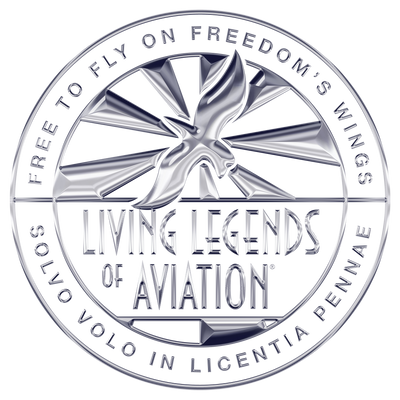STEVEN F. UDVAR-HAZY

Steven F. Udvar-Hazy, the Lifetime Aviation Entrepreneur Award recipient of 2005, became fascinated with aviation at the age of 7, when he visited the Budapest Air Show. There were Yaks, sail planes, MG-15s; the sounds and smell of airplanes was captivat- ing. As he studied the Yak, he remembered “the chrome-like propeller of this Yak Russian aerobatic aircraft. As the pilot was starting the engine, the sunshine was reflecting off the three propellers. It was fascinating for a child.” At that moment, the young boy decided he wanted to be a pilot.
“Living in a communist country, airplanes represented a sense of freedom,” Hazy explained.
He took his first flight in 1954 on an LI-2, a Russian-built DC-3. At the age of 11 or 12, he began studying flight schedules. He would study which airlines flew where, and what equipment they flew. Some boys like to memorize baseball statistics and baseball cards; Steven was engaged with aviation statistics, learning about different planes, their range, the different capabilities of each type of plane, etc. With a grin and eyes sparkling, Hazy said the education paid off later.
The family fled to Sweden with few possessions and emigrated to the U.S. at the age of 13. While living in New York, he learned English quickly and spent many afternoons at Idlewild Airport in Queens (now JFK), making friends with mechanics so he could watch them work in the hangars.
In 1961, while visiting friends in Galion, Ohio, 15-year old Steven took his first flight on a U.S. general aviation aircraft, a Piper Cub. He talked several people into taking him into the front so he could feel the controls. He and his family moved to Los Angeles and, at age 16, Hazy started taking flying lessons at Whiteman Airpark near Burbank Airport in a Cessna 150. The cost of the lesson was $9 an hour and the plane was an equal amount, so Hazy held a couple part-time jobs. He soloed at the age of 18; his goal was to one day start an airline.
With his aviation studies, he found a company in Ireland that had way too many types of planes, and he consulted with them to streamline their operation. The strategic plan worked and Hazy still worked with them for years to come. Hanging around airports, Hazy became aware of planes that needed to be sold and companies that needed to buy certain types of aircraft. At the ripe old age of 21, he brokered his first million-dollar aircraft deal.
He soon realized that there was more money in brokering commercial aircraft than consulting. He formed ILFC with two partners, Leslie and Louis Gonda. “We had this crazy and irresponsible idea that we could lease planes to airlines,” Hazy said. ILFC introduced the world to a simple concept, now known as the “operating lease.” No longer did airlines have to buy their planes with bank financing or long-term tax leverage leases. Airlines now could lease a plane for a finite period of time and either renew or change to new or different needs as the lease expires.
By 1983, ILFC went public, with a $26 million IPO. They sold to AIG, in a tax-free stock swap. During the mortgage crisis and bailout, AIG was asked by the U.S. government to diverse its interests in the ILFC. Hazy tried to purchase the company back, but was unsuccessful. Hazy retired for a few months, but the yearning for another aviation leasing company soon emerged and he created Air Lease Corporation in 2010. As of July 1, 2016, Hazy left his CEO role and is now executive chairman of the board of ALC.
Hazy loves the game. “What we’re doing is a joy,” he said. “We set very high goals and we have very high standards. But we’re very informal, very creative, and nurturing to our team. That’s our philosophy.’ His favorite part of the job: “I think it’s to turn the lights on for a lot of our younger management guys, as to achieving what they think is impossible to achieve, overcoming challenges, getting transactions done in foreign countries where they it was believed virtually impossible to achieve.....It’s not the money; it’s more just the challenge.”
The Steven F. Udvar-Hazy Center near Washington Dulles International Airport is a companion facility to the Smithsonian Air and Space Museum on the National Mall. The building opened in December of 2003 and provides enough space to display the thousands of aviation and space artifacts that can’t be exhibited on the National Mall. The two sites together showcase the largest collection of aviation and space artifacts in the world.
Hazy initially donated $60 million, which was the institution’s largest donation to that date, and even added incremental monies later. He helped raise donations from the large aviation companies both here and around the world, and got the commitments needed to fund the “Nations Hangar.”
Hazy, his wife Christine, and their 4 children have been around aviation and airplanes all of their lives. Three out of four of their children are pilots.

